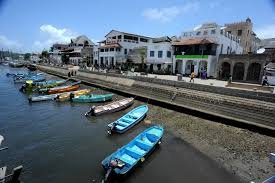“Global Classrooms: How Education Looks in 10 Different Countries”
Updated: 17 May 2025
Global Classrooms: A Glimpse into How 10 Other Countries Educate Their People
Education has been branded the great equalizer, however, what it looks like in practice tends to be different across the globe. The appearance of every classroom echoes a nation’s identity, politics, culture, and the economy. This includes the layout and design of a school, the curriculum in place, the relationship between students and teachers, the level of technology employed, and much more. This article sheds light on how schooling operates around the globe by showcasing 10 countries.

1.Finland: A Student-Centered Utopia
As with everything else in life, Finland aggressively tops global education comparisons and rankings. The reason why: Less pressure with more trust. Finnish schools places a large focus on play during the early years, no to minimal standardized testing, and employing only highly trained teachers. To top everything off, students have shorter school days and homework, leading to mental and creative well being.

2.Japan: Discipline Meets Excellence
Academics in Japan are paired with discipline and respect making education very well rounded. In addition to this, students have high test scores and a structured environment to promote collective responsibility, perseverance, and lifelong learning. Schooling in Japan is even stronger by offering 6 days a week instruction. On top of this, students participate in cleaning.

3.Kenya: Fusion of Old and New
Education in Kenya has grown tremendously recently due to the introduction of the “Competency-Based Curriculum” (CBC). There are still hurdles to overcome such as overcrowded classrooms and a lack of resources in rural areas. National investment in digital education and teacher development programs is aimed at ensuring inclusive quality education.

4.Germany: Double Ticket to Achievement
Under Germany’s education model, students are divided into academic or vocational tracks after primary school, and this is where the dual system begins. The Vocational Education and Training (VET) system that integrates classroom learning with practical work is recognized for curbing youth unemployment and delivering skill-biased employment.

5.South Korea: Extreme Measures, Elite Results
Hagwons are private tutoring academies that dominate the South Korean landscape, creating a highly competitive environment centered around university entrance examinations. Although this study culture raises concerns regarding high-stress levels, South Korea continues to lead the world in literacy and STEM education.

6.Brazil: Expanding Access and Equity
Brazil is known for improving access to education, particularly in the case of primary schooling. Still, there are gaps between urban and rural schools, as well as public and private institutions. Government policies seek to enhance teacher effectiveness and bring down dropout rates among at-risk populations.

7.India: Balancing Scale with Innovation
The population of India has both opportunities as well as a distinctive set of difficulties as a result of the high density. The country has newer policies such as digital education, public and private partnerships, and curriculum updates to advance the education system. However, a lack of infrastructure and relative accessibility for girls and rural students is still a major challenge.

8.Sweden: Progressive and Inclusive
Equality is one of the core values upheld by Swedish schools, alongside protecting the welfare of the learners. Everyone, including university students, has access to free education, which is generously funded by the government. Students are prompted to engage in critical reasoning, cooperative tasks, and independent study. Due to sound immigration policies, there are often multilingual and multicultural classrooms.

9.United States: Diverse and Decentralized
Without a federal syllabus, the U.S. education system is the variegated by region and district. While it does provide innovation and choice, like charter schools and homeschooling, it suffers from inequity concerning funding, access, and academic achievement. Standardized testing and curriculum battles are perennial controversies.

10.China: Where Tradition Blends with Technology
Like most countries, China’s education system is heavily focused on mathematics and science, as well as memorization or rote learning, which are characteristics of Confucianism. It is transitioning to more creativity and less pressure in the academic environment. Smart classrooms and AI are becoming more commonplace as well.

Final Thoughts
As with other facets of a nation, education is shaped by the core values, needs, and assets available to the country. Though no country’s education system is flawless, all have something to offer in the ways of promoting learning, growth, and opportunity. Understanding these differences helps to expand our outlook to the rest of the world and seek for ways to improve education everywhere.


